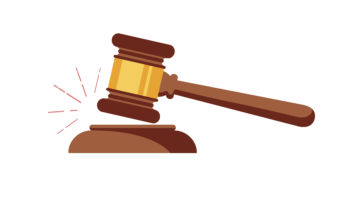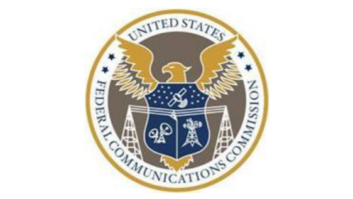Commissioner Jessica Rosenworcel blasted those in “the highest level of our government” who use the fake news label to denounce real news content; and she says this is not like past attempts to throttle critical reporting.

Hostility to media is nothing new, she told an NAB Show audience discussing press freedom; but she expressed horror at how even young children, including her own, now have begun to use the phrase fake news, and how the derisive term has made its way into the national vernacular – “how this reflexive put-down has become an efficient way to dismiss an argument; how it has complicated what we believe is true and false; and how that has chilling consequences for those who seek to report—without fear or favor—on the news we need to know.”
Rosenworcel, a member of the Democratic minority on the commission, lamented “how this sentiment is used to stir up anger, and … how those in power bestow favors on outlets with narratives that flatter rather than offer the hard-hitting assessments we need.” The phenomenon, she said, is playing out at local as well as national levels.
While history has seen attempts to regulate a free press, she continued, “what we are facing now is new. It is a relentless criticism with bigger design and higher stakes. What is happening now is what journalism Professor Jay Rosen has called ‘not just attacking the press but the conditions that make it possible for news reports to serve as any kind of check on power.’ That’s not a state of affairs we should accept.”
She called out President Trump for his tweet last October threatening a license challenge to NBC.
Here’s the full transcript of her remarks as prepared for delivery:
***
Good afternoon. Thank you to the National Association of Broadcasters for having us all here to talk about press freedom. That’s a big topic. But today I want to start small.
So picture this: A family, with two parents, two jobs, two kids, and too little time in the day sits down to dinner. This time around the table is special. It’s sacred. It’s a reprieve from the unrelenting chaos and hubbub of everyday life.
There is food, but just as importantly there is conversation—about the events of the day; the stuff that caused concern; the things that led to smiles. Then inevitably, the older sister needles her younger brother. She lightly pokes and prods him, but only one verbal jab really lands. In response, he scrunches his face but then grows surprisingly calm. Instead of letting loose with a torrent of defensive words he just waves his hand and pronounces her statements “fake news.”
As you might have guessed, this happened in my house and around my dinner table. It’s one of millions of mundane moments from family life. Except it’s not. Because I can’t forget this one. I am stunned at the casualness with which my second grader told his fifth-grade sister to take a hike. Maybe that’s a discussion about parenting. But I also think it’s a discussion about how this derisive term—fake news—has made its way deep into our national vernacular; how this reflexive put-down has become an efficient way to dismiss an argument; how it has complicated what we believe is true and false; and how that has chilling consequences for those who seek to report—without fear or favor—on the news we need to know. After all, a free press plays a critical role in advancing the mix of facts we require to make decisions about our lives, our communities, and our country.
The data demonstrate that we have cause for concern. This month, a poll from Monmouth University found that 77 percent said they believe television and news outlets report fake news. That’s up from 63 percent only a year ago. Back in September, a Gallup poll reported than only 37 percent of us now have a “great deal” or “fair amount” of confidence in mass media. That’s down from 53 percent two decades ago.
Now polling numbers may be popular in Washington, but they are never where you look for the whole story. For that, we can view the evidence multiplying around us. We now regularly see the highest level of our government denouncing real news as false facts. We watch how this sentiment is used to stir up anger, and we see how those in power bestow favors on outlets with narratives that flatter rather than offer the hard-hitting assessments we need.
But just as important is what is happening at lower levels. Because cues come from the top. In Idaho, a state lawmaker asked her constituents to submit entries for her own fake news awards. In Kentucky, fake news was the response given to press questions about the governor’s purchase of a home from a supporter.
Of course, there is nothing new about hostility to the media. In fact, it’s as old as the republic itself. Less than ten years after the Bill of Rights had been ratified, the First Amendment faced an early test when President John Adams signed the Alien and Sedition Acts of 1798. The law allowed for the deportation, fine, or imprisonment of anyone printing “false, scandalous, or malicious writing” about the government.
In 1908, President Theodore Roosevelt sued Joseph Pulitzer’s The World newspaper for its coverage of the Panama Canal project.
In 1961, at a speech before the Newspaper Publishers Association, President John Kennedy cited the need to protect national security when he asked news editors to show restraint in their publishing. Some characterized his speech as a call for censorship and in later years, his aides acknowledged that the President regarded newspapers as his natural enemies.
In 1974, allies of President Richard Nixon targeted the license renewals by the FCC of two television stations that were owned by the Washington Post, the newspaper investigating his involvement in Watergate.
In short, there is nothing novel about friction between the government and the press. It has a long and ignoble history. But what we are facing now is new. It is a relentless criticism with bigger design and higher stakes. What is happening now is what journalism Professor Jay Rosen has called “not just attacking the press but the conditions that make it possible for news reports to serve as any kind of check on power.”
That’s not a state of affairs we should accept.
On October 11 last year I came into the office and settled in for the day ahead. I set my coffee down and did the usual—sorted through documents on my desk, sent out a batch of emails, and scrolled through a few things online. Then, just before 10 in the morning something caught my eye. It was a little shocking, so I did a double take and re-read it a few times. But there it was. The President had tweeted a threat to challenge the broadcast license of NBC, citing fake news.
We all have lines. This crossed mine. It took just a few minutes and fewer than 140 characters for me to reply on Twitter and stand up for the First Amendment. Because no, the President cannot revoke the license of NBC. It’s fundamentally at odds with our constitutional tradition. It’s also wrong on basic license process. So to explain, I did what any communications wonk would do, I made sure my tweet linked to the 33-page single spaced primer on FCC broadcasting rules.
This was my media advisor’s first week on the job. Here we were correcting the Executive Branch and protecting the First Amendment and broadcasters all before our morning coffee. That’s because there it was—not just attacking the press, but attacking the conditions that make it possible for news reports to serve as a check on power. Credit to the National Association of Broadcasters, whose President responded swiftly by saying: “The founders of our nation set as a cornerstone of our democracy the First Amendment, forever enshrining and protecting freedom of the press. It is contrary to this fundamental right for any government officials to threaten the revocation of an FCC license simply because of disagreement with the reporting of a journalist.” Exactly. Still, it took too long for too many of my colleagues to respond to this assault on the First Amendment. On these matters, history won’t be kind to silence.
I wish this was an isolated incident in which the specter of fake news intersected with the work of the FCC. I wish it was the only time when I saw an attack on the conditions that make it possible for news reports to serve as a check on power. But it’s not. More recently, the FCC has been changing its media policy rules from front to back—bringing back the scientifically obsolete UHF discount, changing how many of the most-watched stations a single broadcaster can own in a market, and ending the rule that requires the ability to broadcast from the city where a station is licensed. Some of these policies are in need up updating—and there’s an honest conversation to be had about that. But collectively, they have the distinction of clearing the way for a transaction right now pending before the FCC. It’s a merger that could result in a single broadcast company—Sinclair—having the unprecedented ability to reach 72 percent of our nation’s households. This is a company that is not only getting special treatment from the FCC—it’s getting a special call-out from the Executive Branch. This is important for all the reasons I’ve discussed today. So stay tuned.
I started my remarks by talking about sitting down for dinner at a table. But sitting down is a fitting metaphor—for what we cannot afford to do. We need to stand up, speak out, and call out when government is being used as a tool to attack the conditions that make it possible for news to serve as a check on power. We cannot allow the cry of fake news to extinguish our inquiry into hard subjects, diminish our willingness to seek truth, or temper our support for the First Amendment. These, after all, are American values—the ones I want to pass on to my children—and see thrive for generations to come. Thank you.







